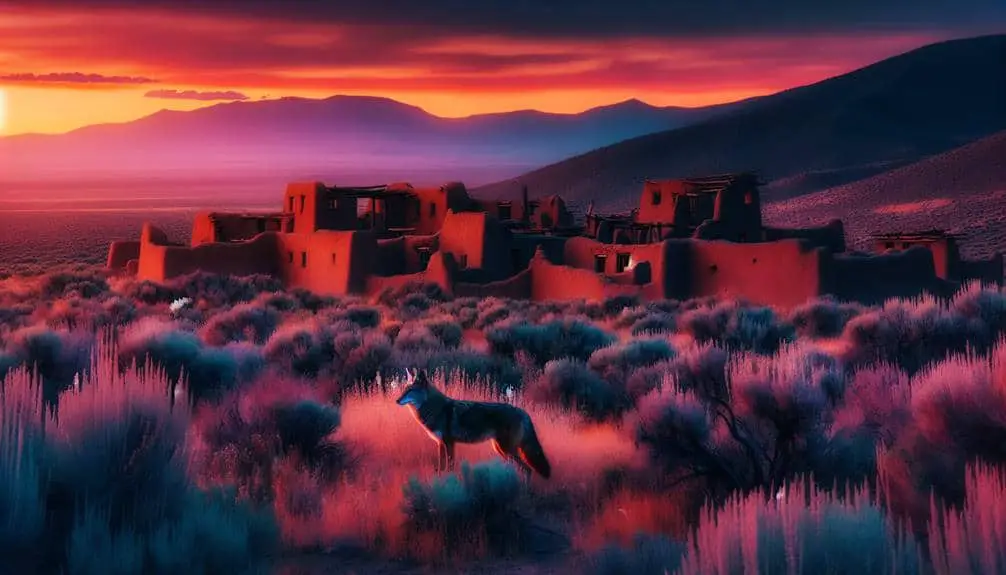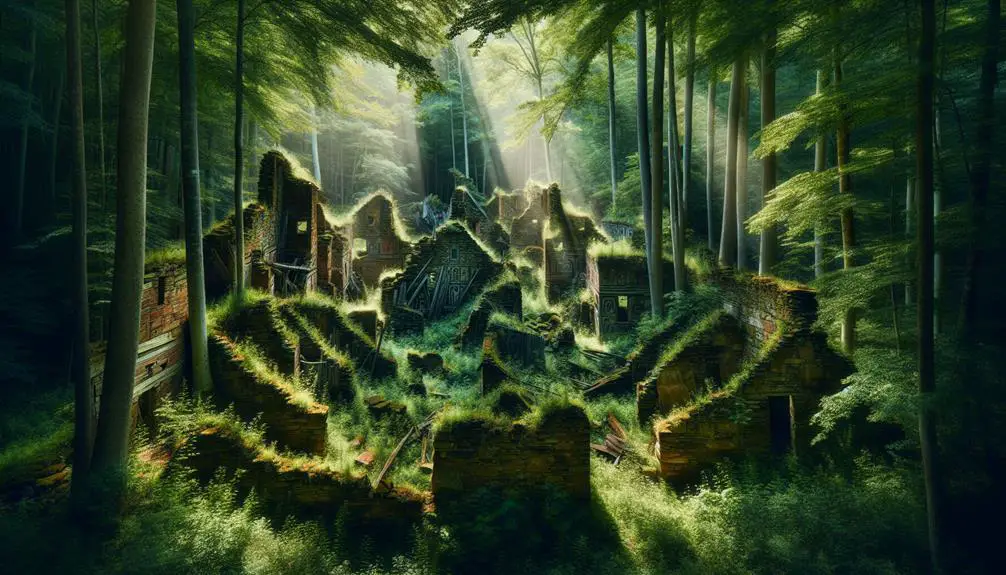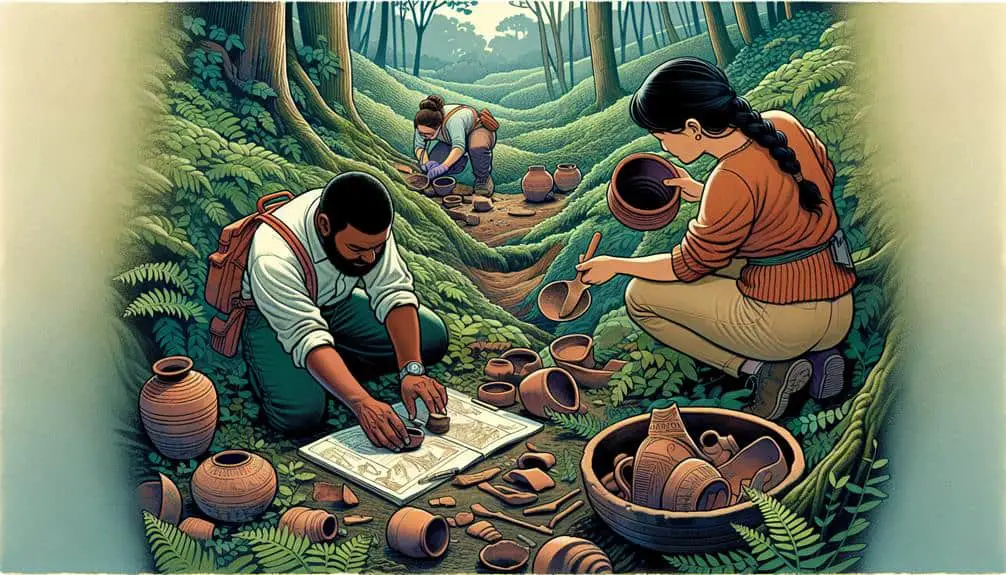Embark on a journey through the mysterious Native American ghost towns in the US. Discover the historical narratives behind their origins, from population declines to forced resettlements. Explore the cultural significance of these abandoned sites, rich with communal activities and spiritual connections. Witness preservation challenges faced, balancing conservation with accessibility. Hear haunting tales of ghostly apparitions and cursed artifacts. Visit must-see ghost towns like Bodie and Centralia, offering poignant reminders of human settlements' transient nature. Unravel the tapestry of these enigmatic remnants for profound insights into the past.
Key Points
- Native American ghost towns hold immense cultural and historical significance.
- Abandonment reasons include forced relocation, government policies, and cultural assimilation.
- Sites were centers of communal activity, storytelling, and spiritual connection.
- Teach about resilience and adaptability of Native American communities.
- Understanding rituals, ceremonies, and everyday practices within these towns is crucial.
Origins of Native American Ghost Towns
Native American ghost towns in the US originated due to a combination of factors such as economic shifts, environmental changes, and cultural influences. Archaeological discoveries indicate that these towns faced a notable population decline, often attributed to a mix of disease outbreaks, warfare, and forced resettlement. The data reflects a pattern where communities struggled to adapt to new circumstances, leading to abandonment and the eventual formation of ghost towns.
Population decline within these Native American settlements can be traced back to various causes. For instance, the introduction of European diseases, such as smallpox, notably impacted the indigenous population, leading to a rapid decrease in residents within these towns. Additionally, conflicts with settlers and other tribes further contributed to the decline, forcing many to leave their homes in search of safety or resources elsewhere. The combination of these factors created a domino effect that ultimately resulted in the abandonment of these once-thriving communities.
Cultural Significance and Abandonment
Examining the cultural significance and reasons behind the abandonment of these historical sites provides valuable insights into the complexities of Native American ghost towns in the US. Native American ghost towns hold immense cultural traditions and historical significance that offer a window into the past ways of life and societal structures of various tribes. The abandonment of these sites often stems from a combination of factors, including forced relocation due to government policies, changes in economic opportunities, environmental degradation, and cultural assimilation.
Understanding the cultural significance of these ghost towns involves delving into the rituals, ceremonies, and everyday practices that once thrived within their boundaries. These sites weren't merely settlements but centers of communal activity, storytelling, and spiritual connection. The historical significance of these locations lies in their ability to teach us about the resilience and adaptability of Native American communities in the face of adversity.
Preservation Efforts and Challenges
Considering the historical significance and cultural value of Native American ghost towns, preserving these sites presents a multifaceted challenge that requires strategic planning and collaboration among various stakeholders. Challenges in restoration efforts stem from a lack of funding, limited resources, and the complexities of maintaining authenticity while ensuring safety for visitors. The delicate balance between conservation and accessibility often poses a significant hurdle. Additionally, the remote locations of many ghost towns make regular monitoring and maintenance difficult.
Preservation efforts face the ongoing challenge of balancing modern needs with historical integrity. The need for infrastructure improvements, such as visitor facilities and pathways, must be carefully integrated to minimize impact on the original structures and landscape. Moreover, the involvement of tribal communities in decision-making processes adds another layer of complexity to restoration projects, requiring respectful engagement and collaboration.
To overcome these challenges, a holistic approach that combines historical research, conservation expertise, community input, and sustainable management practices is crucial. By addressing these obstacles with creativity and diligence, the rich heritage of Native American ghost towns can be preserved for future generations to explore and appreciate.
Haunting Stories and Legends
Explore the eerie and mysterious tales surrounding deserted Native American settlements scattered across the United States. These ghost towns hold a plethora of haunting stories and legends that have been passed down through generations. Here are some intriguing phenomena associated with these abandoned sites:
- Supernatural Encounters: Visitors have reported ghostly apparitions, unexplained sounds, and eerie lights in the abandoned buildings of these Native American ghost towns.
- Mysterious Disappearances: There are tales of people going missing in these desolate places, never to be seen again. Some believe these disappearances are linked to the spirits of the past inhabitants.
- Cursed Artifacts: Legends speak of cursed artifacts left behind in these towns, bringing misfortune to those who dare to take them.
- Lost Souls: Locals believe that the spirits of the Native Americans who once lived in these towns still roam the streets, searching for peace and closure.
Must-Visit Ghost Towns in the US
Among the eerie and mysterious tales of haunted Native American settlements lie a selection of must-visit ghost towns in the United States, each holding its own unique history and allure. Urban exploration enthusiasts and historical tourists alike will find these abandoned towns fascinating windows into the past.
Bodie, California, stands as a well-preserved example of a gold rush town frozen in time, offering a glimpse into the Old West. For those interested in mining history, the silver mining ghost town of Silver City, Idaho, provides a haunting look at the once-thriving industry.
Craco, Pennsylvania, with its coal mining remnants, echoes a bygone era of industrial prosperity, now eerily quiet. Centralia, Pennsylvania, infamous for its underground coal mine fire burning since 1962, attracts visitors curious about its underground fire's effects on the town's abandonment.
These ghost towns not only offer a chance for adventure and exploration but also serve as poignant reminders of the transient nature of human settlements.
Frequently Asked Questions
Are There Any Specific Rituals or Ceremonies That Native American Tribes Perform When Visiting or Preserving Ghost Towns?
When visiting or preserving ghost towns, Native American tribes may perform rituals or ceremonies to honor ancestors, cleanse spirits, and maintain cultural significance. These practices vary across tribes and encompass spiritual customs to guarantee preservation methods.
How Do Native American Tribes Feel About Non-Native American Visitors Exploring Their Ancestral Ghost Towns?
Native American tribes prioritize ancestral connections and cultural sensitivity when considering non-Native visitors exploring their historic ghost towns. Tribal perspectives value respect for sacred sites and traditions while acknowledging the impact of visitors on these spaces.
What Role Do Modern-Day Native American Tribes Play in Preserving and Protecting These Historic Sites?
You play a critical role in preserving and protecting historic sites by actively engaging in community involvement and cultural preservation efforts. Your contributions guarantee these sites remain connected to their heritage and stories.
Are There Any Supernatural Occurrences or Unexplained Phenomena Reported in These Ghost Towns?
In these ghost towns, supernatural sightings and paranormal investigations have been reported. People often recount unexplained phenomena and eerie experiences, adding layers of mystery to the historical remnants of the past.
Are There Any Specific Guidelines or Protocols Visitors Should Follow When Exploring Native American Ghost Towns to Show Respect for the Culture and History?
When exploring native American ghost towns, remember cultural etiquette and preservation practices. Respect historical significance by refraining from removing artifacts and leaving the area undisturbed. Show respectful exploration by honoring the land's past and its people.



